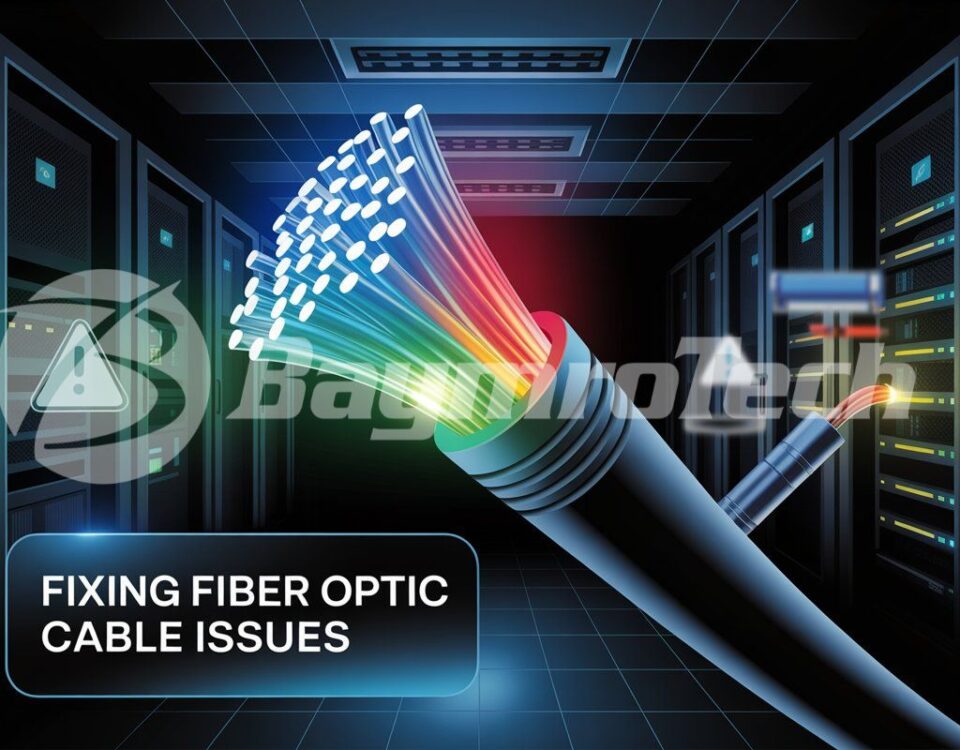Ever had your internet crawl to a halt just when you needed it most? Or maybe you’ve spent hours troubleshooting a “mysterious” network slowdown, only to discover the culprit was a tiny kink in a cable or a dusty connector. If you’re responsible for keeping a fiber optic network running smoothly—whether in a business, data center, or sprawling telecom infrastructure—you know that signal loss isn’t just an inconvenience. It’s a threat to uptime, productivity, and your peace of mind. But here’s the good news: preventing signal loss in fiber optic networks is entirely within your control, with the right know-how and a few smart habits.
Why Signal Loss Happens in Fiber Optic Networks
Signal loss, technically called attenuation, is the gradual weakening of light as it travels down the fiber. This can be caused by:
- Bending or kinking the fiber optic cable
- Dirty or poorly connected connectors
- Too many splices or connectors in the network
- Environmental factors like temperature swings and moisture
- Using lower-quality materials or improper installation techniques
Even the best fiber optic cable can’t perform miracles if it’s mishandled, installed carelessly, or neglected over time12.
Top Strategies to Prevent Signal Loss
Let’s break down the most effective ways to keep your fiber optic network humming along at full speed.
1. Choose High-Quality Fiber Optic Cable and Components
Not all cables are created equal. Investing in premium fiber optic cable, like those manufactured by Baymro Technology, ensures lower inherent attenuation and better durability. Look for:
- High-purity glass cores to minimize absorption and scattering losses
- Proper cable gauge (thicker cables can reduce signal loss over long distances)
- Military-grade or reinforced jackets for harsh environments3
Don’t forget about connectors! Precision-engineered connectors, like the ones from Baymro Tech, are critical for maintaining alignment and minimizing reflection and insertion losses4.
2. Master Proper Installation Techniques
A well-installed fiber network is a happy (and fast) network. Here’s how to get it right:
- Avoid Sharp Bends: Never bend a cable tighter than its minimum bend radius—usually four times the cable’s diameter. Sharp bends can cause light to leak out, leading to significant attenuation15.
- Minimize Splices and Connectors: Every splice or connector introduces a bit of loss. Plan your network to use the fewest possible, and opt for fusion splicing for the lowest insertion loss21.
- Don’t Overstress the Cable: During installation, push rather than pull when possible, and never exceed the cable’s maximum tensile load2.
- Keep It Clean: Even a speck of dust on a connector can cause major signal loss. Clean connectors before and after testing, using the right tools and consumables26.


3. Control the Environment
Environmental factors can sneak up on your network:
- Temperature Management: Signal attenuation increases by about 4% for every 10°C rise in temperature. Whenever possible, install cables in temperature-controlled environments or use cables rated for extreme conditions1.
- Moisture and Dust Protection: Use watertight cables for underground installations and ensure all connectors are sealed against dust and moisture. Dust can interfere with light transmission at contact points; moisture can cause long-term damage5.
4. Document and Organize Your Network
You can’t fix what you can’t find. Keep detailed records of cable routes, splice points, and connector locations. This makes troubleshooting faster and helps prevent accidental damage during future work5.
5. Regular Maintenance and Testing
Don’t wait for problems to appear. Schedule routine inspections and cleaning:
- Visual Inspections: Check for physical damage, kinks, or stretched sections76.
- Connector Cleaning: Make this a habit—dust and dirt are the enemy of signal integrity6.
- Performance Testing: Use tools like an Optical Time Domain Reflectometer (OTDR) to pinpoint loss points and verify network health8.
6. Leverage Advanced Technologies
Modern fiber optic networks offer smart ways to reduce loss:
- BiDi Transceivers: Allow bidirectional communication over a single fiber, reducing the number of cables needed and the associated loss1.
- DWDM Systems: Dense Wavelength Division Multiplexing lets you transmit multiple signals over a single fiber, optimizing bandwidth and minimizing attenuation1.
7. Plan for Protection and Redundancy
Don’t let construction work or rodents ruin your day:
- Use reinforced cables and protective conduits in vulnerable areas5.
- Plan for redundancy—having backup paths can minimize downtime if a cable is damaged5.
Real-World Example
A large data center once faced intermittent slowdowns every afternoon. After weeks of head-scratching, the culprit was found: a bundle of fiber cables installed too close to a heating vent. The temperature spike caused a measurable increase in attenuation, degrading performance until the HVAC system cycled off. A simple reroute and some insulation solved the problem—and saved the IT team’s sanity.
Quick Reference: Common Causes of Signal Loss and How to Prevent Them
| Cause | Prevention Tip |
|---|---|
| Sharp bends | Respect minimum bend radius |
| Dirty connectors | Clean before/after every connection/test |
| Excessive splices | Minimize and use fusion splicing where needed |
| Poor-quality cable | Invest in premium, certified fiber optic cable |
| Environmental factors | Control temperature, moisture, and dust |
| Physical damage | Use reinforced cables and protective conduits |
Want to Learn More?
For a deep dive into fiber optic cable types and best practices, check out our comprehensive cable guide. Need tips on choosing the right connectors? Visit our fiber optic connector resource.
For authoritative external resources, the Fiber Optic Association offers a wealth of technical guides, while Corning’s Fiber 101 is a trusted industry reference. For a practical look at testing and maintenance, see R&M’s protection tips.
Wrapping Up
Preventing signal loss in fiber optic networks isn’t rocket science—it’s about good habits, smart planning, and a little bit of vigilance. By choosing quality materials, installing with care, keeping things clean, and staying proactive with maintenance, you’ll keep your network fast, reliable, and ready for whatever the future throws your way.
Still have questions or want to discuss your specific fiber optic challenges? Contact our team—we’re here to help you build a stronger, more resilient network. Or share your own tips and stories in the comments below. Let’s keep the world connected, one (well-maintained) fiber at a time!




